So you’ve just got your ACT practice score report from a practice test with Ashland Prep. How do you make sense of it all?
The video above gives you the basics in less than two minutes. If you want even more details, read on! Or, reach out to ravi@ashlandprep.com to get a custom analysis of your personal score report.
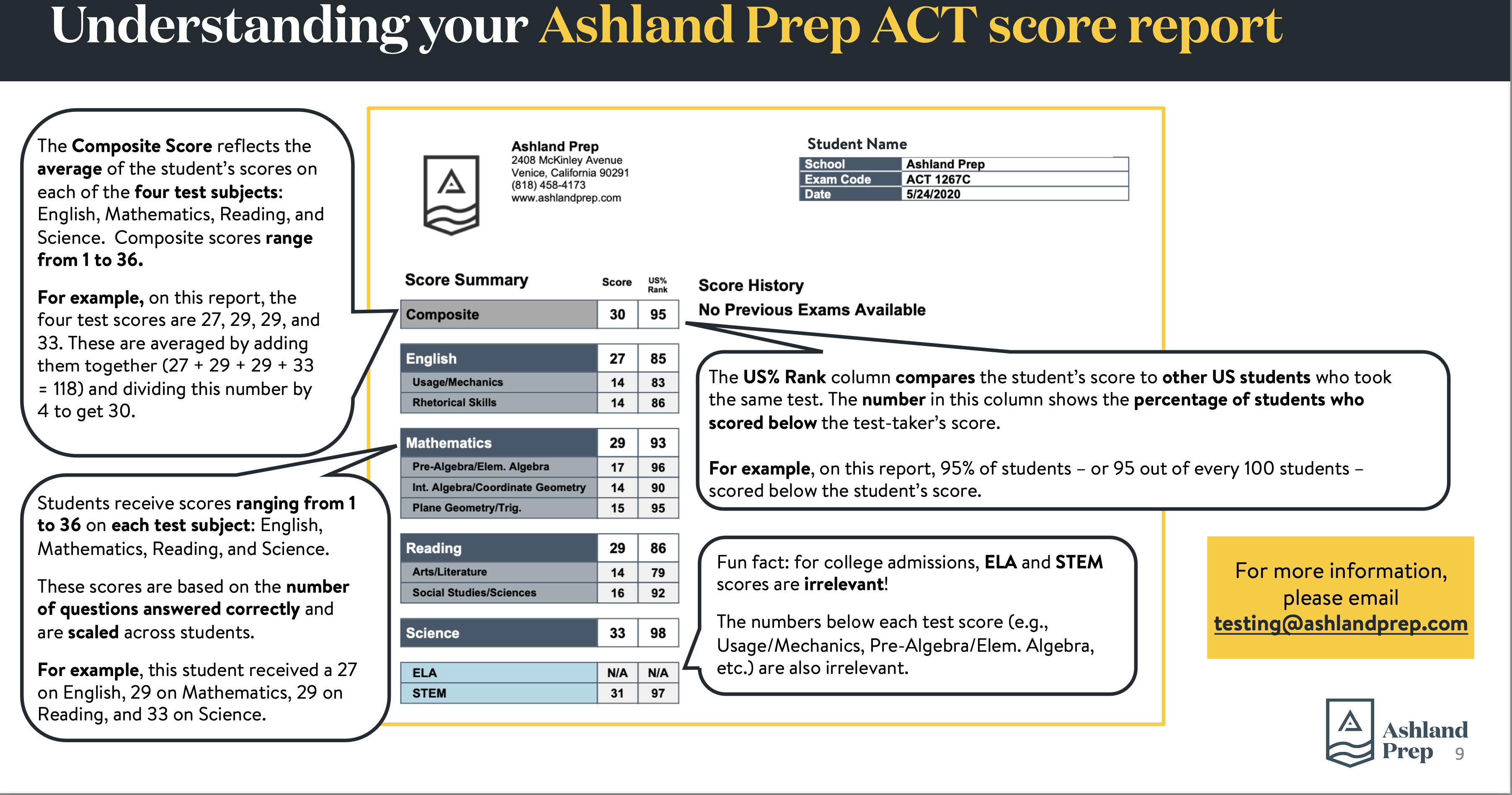
The Composite Score is your overall score, averaged between four sections: English, Math, Reading and Science. This score will be from 1-36. The label to the right of “Score,” labeled “US%Rank,” shows your percentile.
In this student’s case, he scored 27 on English, 29 on Math, 29 on Reading, and 33 on Science.
Add those individual section scores up: 27+29+29+33=118.
To get the average, divide by the number of sections (4):
118/4=29.5
29.5 rounds up to 30. If the student’s average was 29.4, we would round down to 29.
This post will start by explaining percentiles, then delve specifically into this student’s score report. I’ll show how and why I think this student is capable of achieving a 33+ on the ACT just by looking at the data.
What is a percentile?
Let’s say you’re in a room full of 100 kids anywhere in the country. These 100 kids are taking the ACT, and they represent the average students you’ll see anywhere in the country.
If you score 33 on the ACT, you’re likely in the top two students in the room. You’re beating 98 of those kids on average.
If you score 20 on the ACT, you’re beating 54 of those kids. In fancier words, you’re in the “54th percentile.” On the score report, that number to the right of your actual ACT score represents the number of kids in a room of 100 kids that you’re beating on the test.
The ACT and SAT have slightly different ways of representing this. For the sake of simplicity, this is what your percentile is. Feel free to reach out to us if you’d like more details.
If you score better, your percentile rank is higher. If you score lower, your percentile rank is lower. Here’s a list of percentile ranks by ACT score, taken directly from the ACT website:
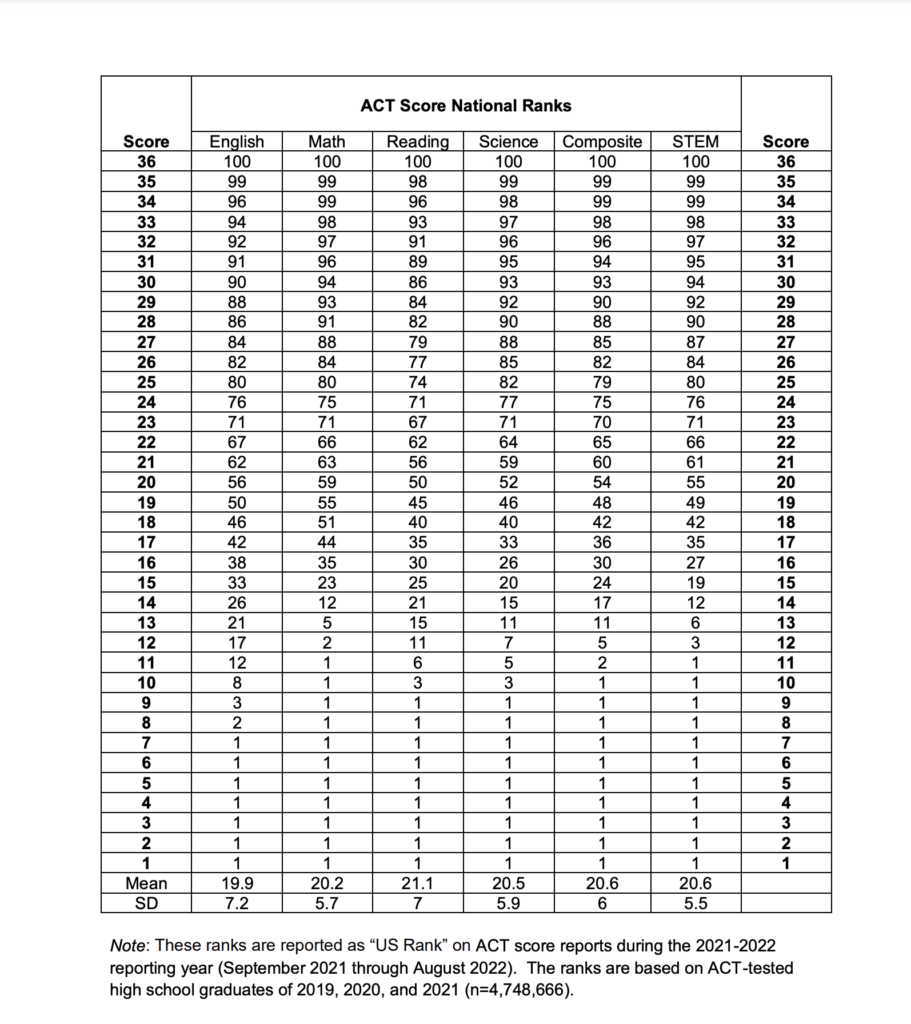
Note that 34-36 are all in the top one percentile. If you’re a high scoring student, you shouldn’t stress about trying to achieve a score above a 34. Beyond that point, there’s an element of luck and you’ve proven you know your stuff.
Now let’s take a look at this student’s individual sections. If you scroll down the PDF of your score report, you should see these pages as well!
English
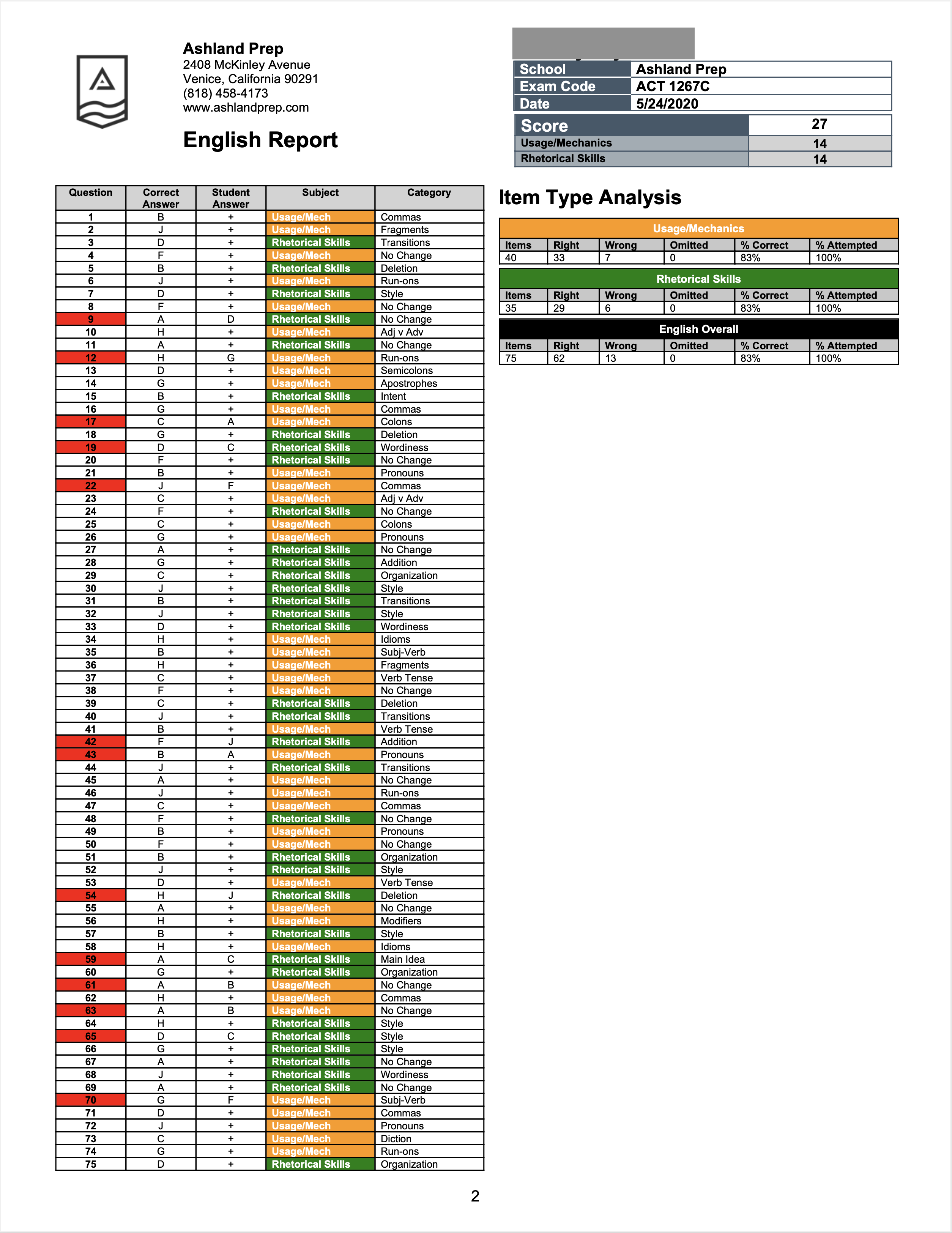
On the ACT, there are five ACT English passages, with 15 questions per passage. The interesting thing to note here is that no one passage is more difficult than another. As instructors, we would look at this score report and see a lot of potential for growth on English in this student’s score report. Why? Because in the middle of the exam, he gets 19 questions correct in a row! This shows that this student has knowledge of grammar concepts, but struggles to apply them consistently. Developing a consistent approach here to the grammar problems, and relying on knowledge of actual grammar rules rather than how sentences sound, would help him achieve his top score. With practice, this student could likely achieve a score in the 33/34 range in this section, or even higher.
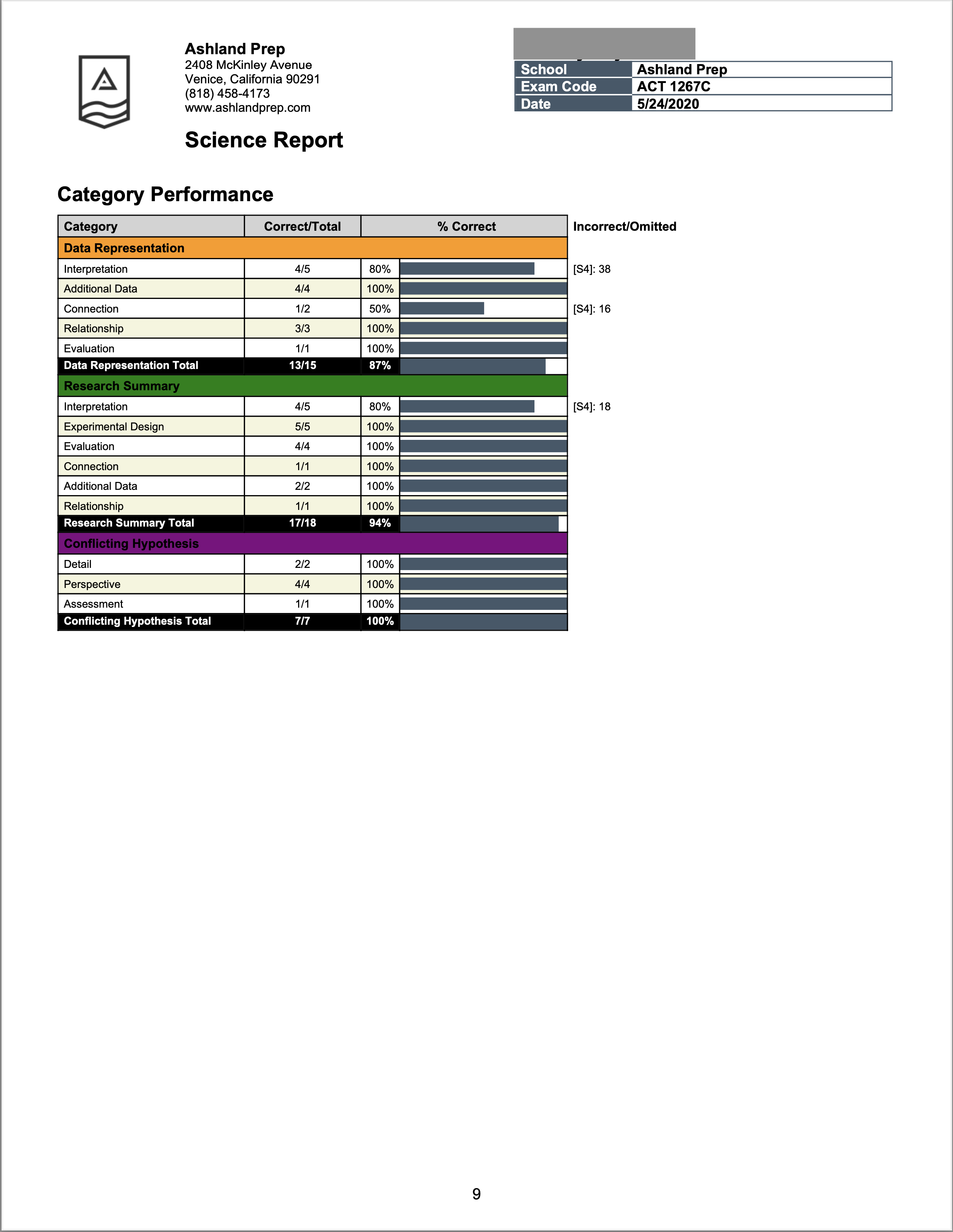
This page above breaks down the different question types and how the student performed on each of them. This page is good to look at to see if there are any glaringly obvious gaps in knowledge. This student seems to get only one or two wrong of any question type, which suggests that he doesn’t have any significant gaps in knowledge. Rather, this page supports the idea that developing a consistent approach would help this particular student more than reviewing individual grammar rules. Of course, he would benefit from doing both.
Math:
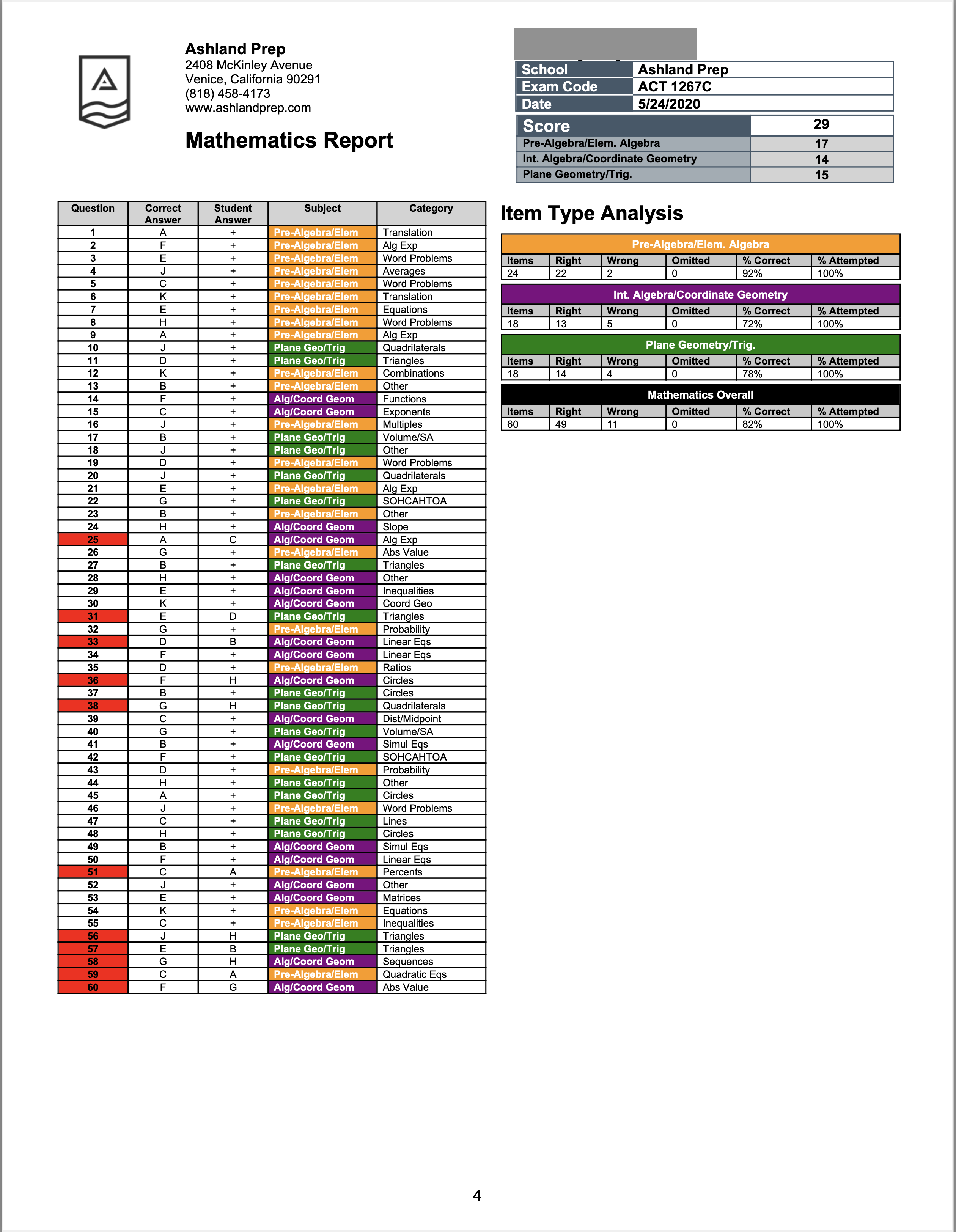
This student shows a lot of promise on the math section as well. On math, the ACT is organized from easy to hard: the first question is the easiest, and the last question is theoretically the hardest.
You can actually break this section down even further: the first 40 questions, while they get harder, generally test your knowledge of concepts. For instance, do you know fractions? If you only get 40 question right, you’re still in the top 20 to 25 percentile.
The final 20 questions tend to test your ability to apply the concepts you’ve already proven you understand in unique ways. For instance — okay, you’ve proven you know fractions, but how do you apply them in x or y weird way?
Like in the English section, this student demonstrates strong math skills but an inconsistent approach. He breezes through the first 24 questions, gets five wrong from 25-38, then gets the next 11 consecutive questions right. A majority of those 11 questions he got right in a row are likely more difficult than the ones he got wrong. The goal would be to figure out WHY this student is getting these easier questions wrong.
Had he gotten those five easier questions right, while still missing those six questions in the last ten and running out of time, this student still would have scored 33 on this portion of the exam. This is why this student demonstrates the ability to score 33+ on this section too. So far, he’s proven he can achieve at least 33 on both the English and Math sections.
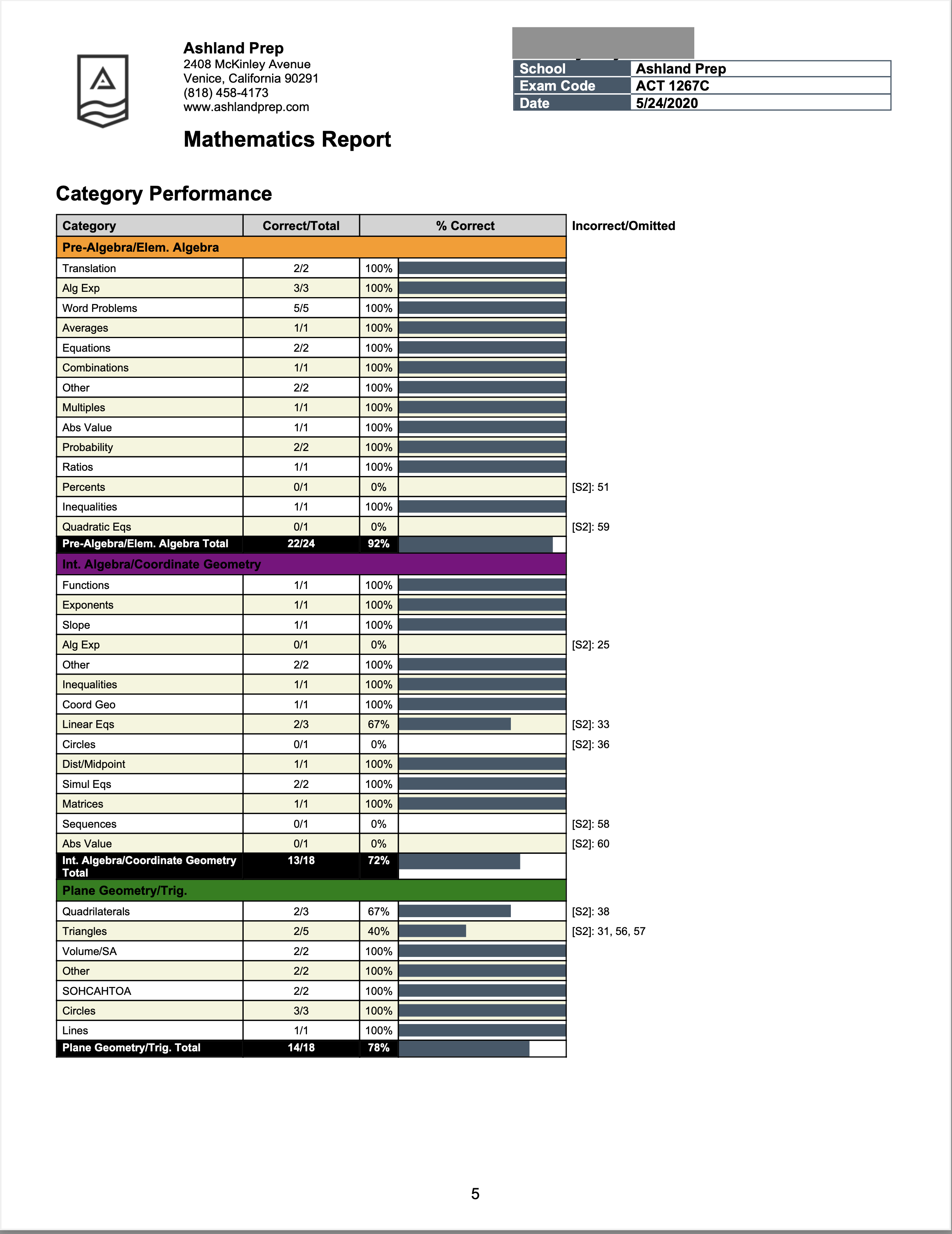
Again, the above shows the breakdown of the different question types and how the student performed on each of them. Like with the English section, there’s no glaringly obvious or statistically significant data we can obtain here to suggest this student is weak in particular question types. It’s clear he can use an overall review of algebraic concepts. More likely, he just lacks some confidence in algebra for whatever reason and needs a boost there.
Reading:
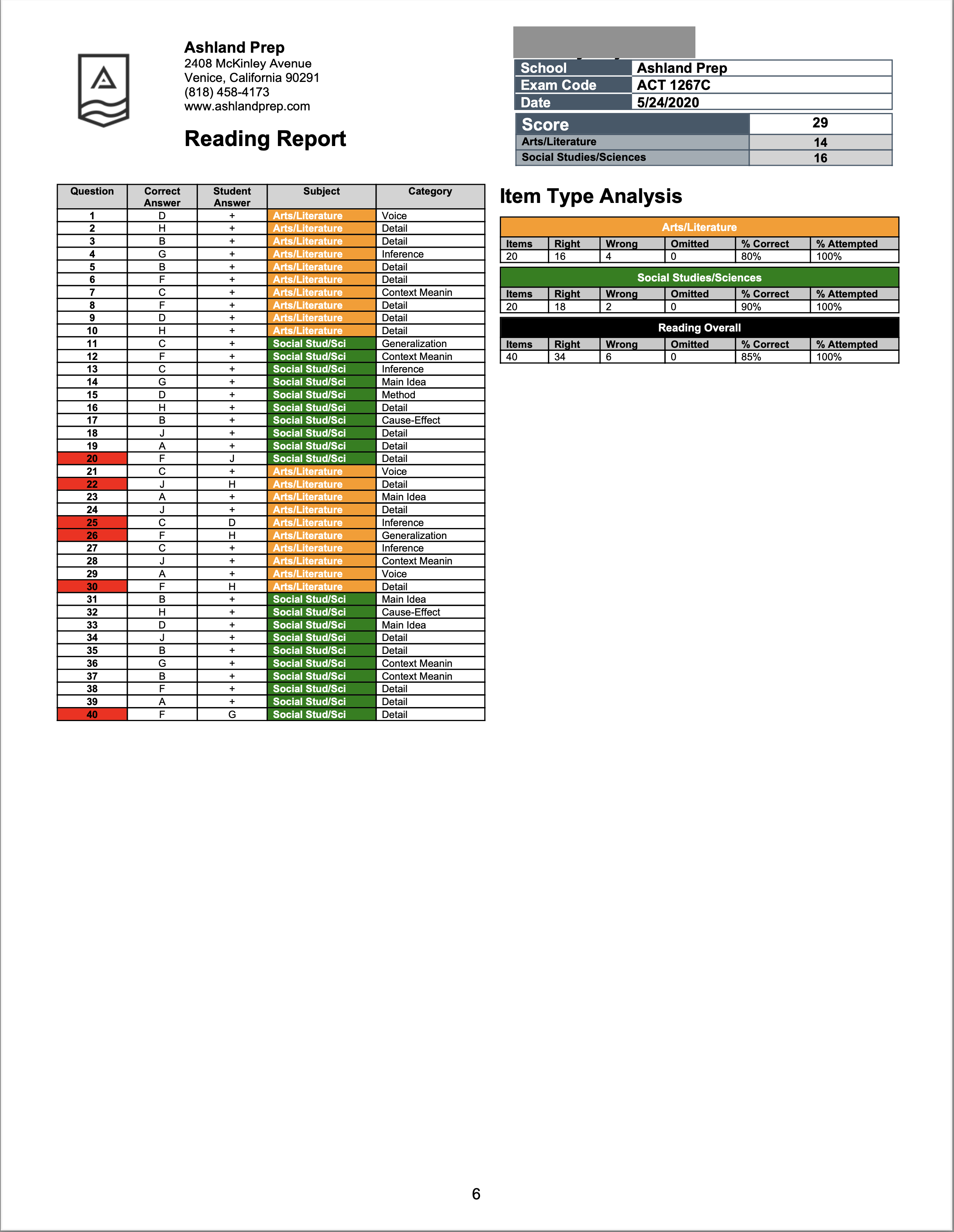
By this point, it’s easy for Ashland Prep’s instructors to see a pattern in this student’s performance across all sections: bouts of brilliance followed by bouts of inconsistency.
The reading section is divided into four passages of ten questions each. Like in English, no one passage is more difficult than another. Ashland tutors are an optimistic bunch: if this student can get 19/20 questions correct on the first two passages, he absolutely has the potential to do the same on the final two passages.
While we would need to work with the student to truly understand why he performed so poorly on questions 21-30 on this particular exam, we can deduce that he likely was just bored by the passage and not applying himself. Still, his ceiling here on the reading section is high: I anticipate that this student should again aim for a 33 and above. On this particular exam, he was on pace to get 38/40 questions right after the first two passages. This would have led to a 34, and this is the target we would set for him on test day.
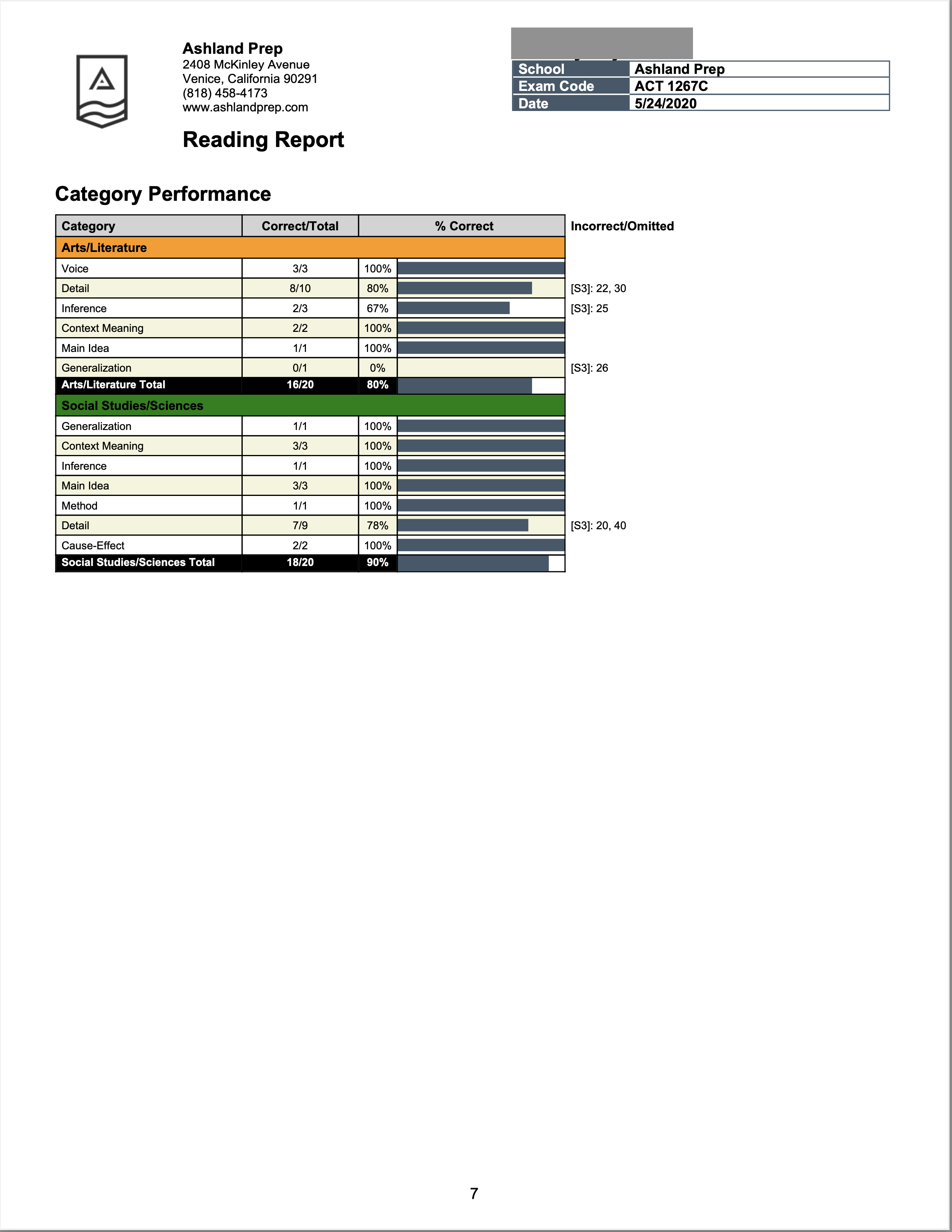
Again — a breakdown of different question types that this student missed. If you’re a lower scorer than this student, it may be easier to see if you have glaringly obvious gaps in your knowledge. Many students struggle with main idea and inference questions, for instance. For this student, developing a consistent approach would push him to a 33+ more than developing knowledge of answering different types of questions.
Science
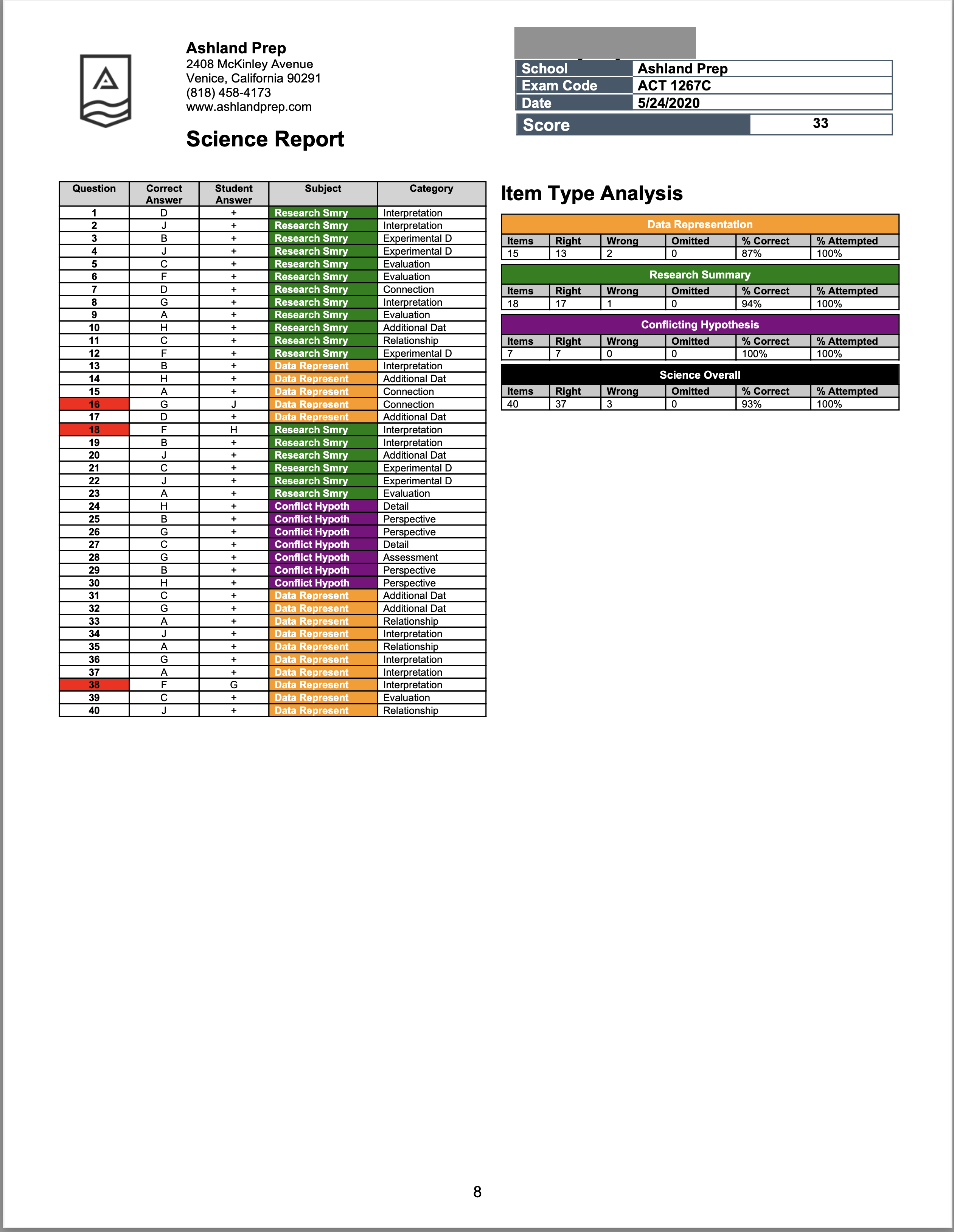
Science is arguably the most intimidating section on the ACT. It’s at the end of the test, so you’re tired, and it’s super fast, and it involves reading a bunch of complicated looking graphs. In reality, the section is easier than you would think (stay tuned for a post on the ACT Science section), but scoring in the top one percentile as this student did on the first attempt is exceedingly rare. This is also the final piece of why I think this student has potential to score in the top one percentile on this exam: it’s much easier to improve English and Math scores than Reading and Science scores.
At this student’s level on the Science section, the goal would be to simply minimize human error. On the right day with the right mindset and stamina, this student can score 36 on the Science section. Unfortunately, there’s no knowledge to unlock here to improve: only developing a consistent approach that works for him and repetition would help him improve more. In reality, this student and our instructors would spend most of their time honing in on the other three sections of the exam.
In this post, we did the following:
1). Gained an understanding of percentiles
2). Broke down this individual student’s score report by section.
3). Used the data to show why the data shows he’s capable of a score in the top 1-2 percentile.
If you’d like an analysis like this of your score report, please reach out to ravi@ashlandprep.com. This student likely needs to develop consistent habits over the course of four sections to achieve his top score, rather than harping on individual question types. Your score report may tell us something different. We’d be happy to help!
Until next time,
Ravi
Ashland Prep